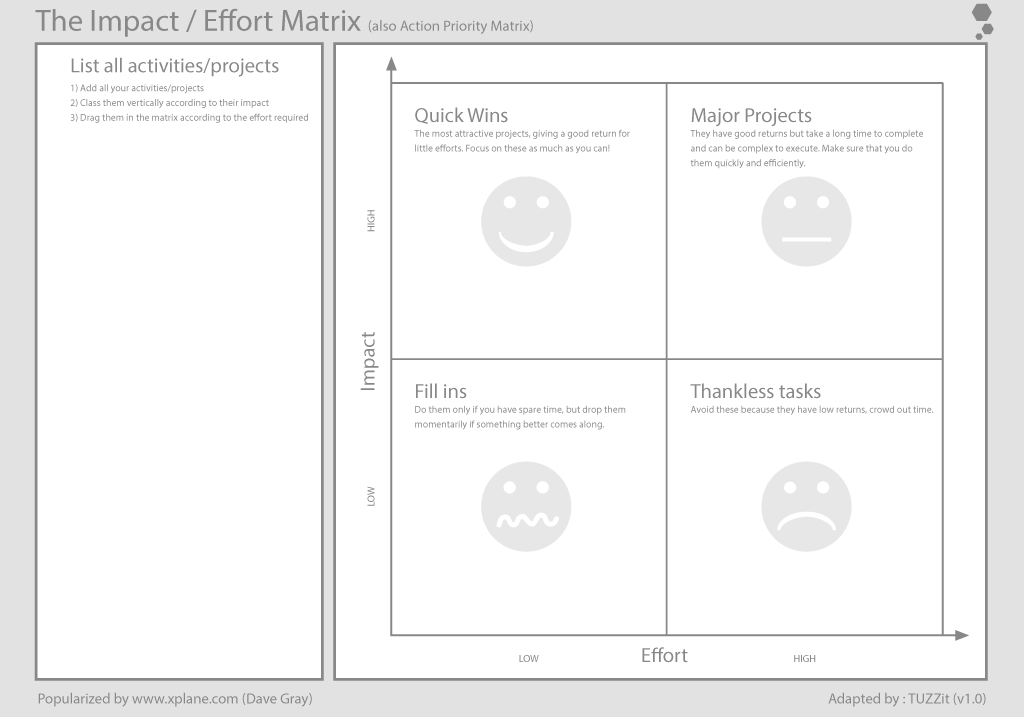Frame a goal in terms by answering the “what to do?” or “what we need?” question.
The Matrix's Creator

Dave Gray
Dave Gray is the founder and chairman of XPLANE and also co-founder of Vizthink, a global community dedicated to the use of visualization. An artist, journalist and information designer, he is passionate about applied creativity...
Description of the Impact Effort Prioritisation Matrix
It is increasingly difficult to sort out activities and get to a good decision in our increasingly busy lives at work and at home. The Impact Effort Prioritisation Matrix (also called the Action Priority Matrix) is a decision-making exercise allowing its users to categorize ideas according to the effort needed and the potential impact.
The four sections of the matrix are:
-
Quick Wins (High Impact, Low Effort)
These are the most attractive ideas/projects, giving you a good return for relatively little effort.
-
Major Projects (High Impact, High Effort)
While these give good returns, they take a long time to complete and can be complex to execute.
-
Wait (Low Impact, Low Effort)
Don’t worry too much about doing these – if you’ve got spare time, do them.
-
Don’t do (Low Impact, High Effort)
Avoid these. Not only do they give low returns, they crowd out time which would be better used elsewhere.
